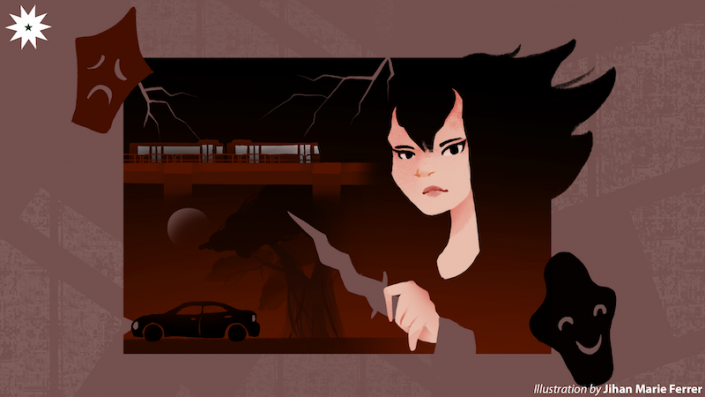
Taking mythological icons of generations past is a fascination among many. In 2005, writer Budjette Tan and illustrator Kajo Baldisimo took this fantasy and applied it to the colorful world of Filipino folklore. Angst-filled comic book panels heavily featuring mythological icons and strong female lead Alexandra Trese quickly filled shelves in book stores nationwide.
As Netflix adapts the beloved modern comic book take on the Filipino supernatural, Trese steps into the international spotlight. While this brings long-overdue recognition to Filipino talent, the series’ artistic choices leave much to be desired.
‘Mga dating nakakubli, ngayo’y ibunyag’
Trese is the tale of Alexandra Trese attempting to solve mysteries involving iconic monsters and creatures from Philippine mythology and modern urban legends. With a gory introductory sequence, the series thrusts the viewer head-first into a dark, gritty, and gothic version of Metro Manila.
Popular characters from Philippine myths are vibrantly revamped; from the rugged demeanor of Nuno, the sleek and sly aswangs, to the diwatas reminiscent of Saturday morning anime. The animation style itself strays away from the source material’s aesthetics, adding colors to the famous comic book panels. While officially referred to as anime, the style more closely resembles those of DC superhero shows like Justice League Unlimited. In this manner, the shadows looming in the dead of night are often juxtaposed with vivid reds and oranges of billboards, resulting in a familiar warm dusky tone all over the visuals.
The series’ high-contrast images, however, make for an eye-wrenching viewing experience. Sudden flashes of light and classic-cinema-style black and white flashbacks may rob photosensitive audiences of a chance to enjoy the series without adverse effects.
‘Tabi-tabi po’
The world of Trese is best reflected by the musical score underlying all the drama of the series. The grungy synths and dirty basslines textured with harmonized incantation chants best represent the clash of ancient cultures and modern technology—which could have sadly been reflected in other aspects of the series.
Apart from the artistic depiction of Manila, a few pop culture breadcrumbs sprinkled here and there, and the mention of hot weather, the series falls short of building an immersive narrative that proudly showcases Filipino culture and folklore. It also fails to employ sound logic in its weak worldbuilding, leaving more questions than it answers.
The voice acting also noticeably falters at certain points, especially with Trese herself. While the character is known for her cold-as-steel demeanor, Liza Soberano’s rendition lacks intensity when needed, landing somewhere between dispassionate and awkward. Meanwhile, her English dubbed counterpart, played by Shay Mitchell is struggling with the more Filipino details of the story. This is unfortunately coupled with the oddly placed spells and subpar English translations of Filipino quips and idioms.
‘Tulay ng sangkatauhan at sa mundo ng karit-an’
Trese disappointingly crams three books’ worth of cases into a short six episodes, effectively subjecting the plot to poor pacing. This also results in a thematic mess that sacrificed proper character development for a rushed last couple of episodes.
The disconcerting effort to translate the comics into a series also diluted much of the compelling and morally grey stories featured in the books. The Tiyanak episode, in particular, is a big missed opportunity. It could have been an avenue to discuss abortion and reproductive health rights, but instead sloppily vilified Nova Aurora.
Using mythology and our fear of things that go bump in the night as a metaphor for the country’s sociopolitical issues is one of the reasons why Trese has a cult following. However, the half-baked attempts to include social commentary in some episodes feel disingenuous to the issues they’re trying to illustrate. The simplistic “not-all-cops” rhetoric in episode four leaves a bad taste in your mouth; especially in the wake of the ongoing war on drugs.
‘Mga kaluluwa, saan kayo papunta?’
In our 2019 review of the comic books, we marveled at the magical world of possibilities that Tan and Baldisimo have introduced us to.
Trese’s Netflix adaptation takes us even deeper into this world—exploring the questions we have about the darkness that lies inside. But more importantly, it started conversations on representation and how we want our culture to be seen.
While no one story can fully encapsulate the complexities of our culture, hopefully, this can open the door for more Filipino narratives—ones that aim for more than just mere representation.
Rating: 2/4
